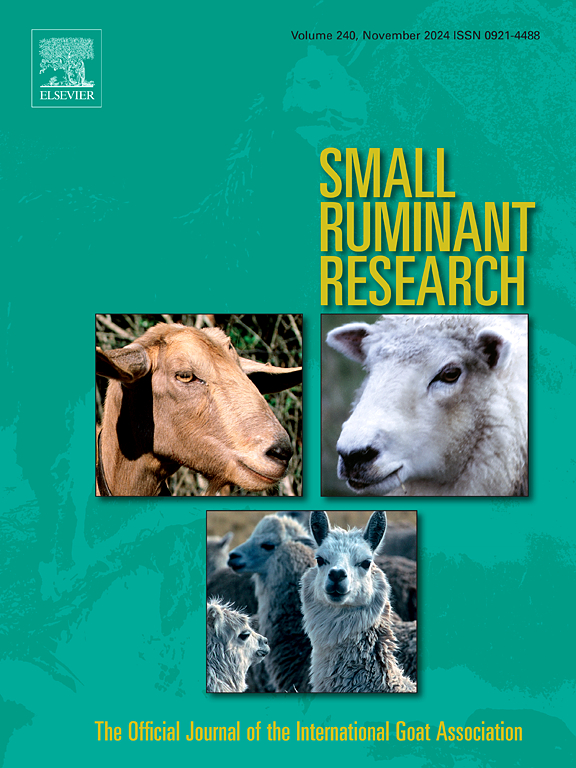Prevalence and risk factors of Haemonchus contortus in small ruminants in China: A systematic review and meta-analysis
IF 1.6
3区 农林科学
Q2 AGRICULTURE, DAIRY & ANIMAL SCIENCE
引用次数: 0
Abstract
Haemonchosis, caused by Haemonchus contortus, is a major parasitic disease impacting ruminants, with serious consequences for animal health and ruminant production. Despite numerous studies on its prevalence, a comprehensive understanding of the disease in China is still lacking. To address this gap, we conducted a meta-analysis of studies examining H. contortus infection in sheep and goats across 17 provinces in China. A total of 52 studies were included, revealing an overall pooled prevalence of 72 %. The highest infection rate was observed in central China (71.31 %), with Henan and Liaoning provinces showing particularly high rates of 87.22 % and 85.57 %, respectively. Region, season, and climatic factors significantly influenced infection rates (P < 0.05), with free-ranging small ruminants and over 6 months of age being more susceptible. Additionally, the study emphasized that goats are more susceptible to infection than sheep, with infection rates rising after 2015. These findings highlight the widespread distribution of H. contortus in China and the urgent need for targeted control measures. Efforts should focus on improving management practices during the autumn season, implementing rotational grazing, using anthelmintics judiciously, and ensuring adequate nutritional support to reduce infection risks and minimize small ruminants production losses, all of which are crucial for advancing the small ruminants industry and fostering broader socioeconomic development.
中国小反刍动物扭曲血蜱流行及其危险因素:系统综述和荟萃分析
由弯曲血蜱引起的血蜱病是影响反刍动物的一种主要寄生虫病,对动物健康和反刍动物生产造成严重后果。尽管对其患病率进行了大量研究,但对中国的该病仍缺乏全面的了解。为了解决这一差距,我们对中国17个省份的绵羊和山羊中弯曲螺旋杆菌感染的研究进行了荟萃分析。共纳入52项研究,显示总体合并患病率为72% %。中部地区感染率最高(71.31 %),其中河南省和辽宁省感染率最高,分别为87.22 %和85.57 %。地区、季节和气候因素对感染率有显著影响(P <; 0.05),其中散养小反刍动物和6月龄以上易感。此外,该研究强调,山羊比绵羊更容易受到感染,2015年后感染率上升。研究结果表明,中国弯纹夜蛾分布广泛,迫切需要采取有针对性的防治措施。应重点改进秋季管理做法,实行轮牧,合理使用驱虫剂,并确保充足的营养支持,以降低感染风险,最大限度地减少小反刍动物的生产损失,所有这些都对推进小反刍动物产业和促进更广泛的社会经济发展至关重要。
本文章由计算机程序翻译,如有差异,请以英文原文为准。
求助全文
约1分钟内获得全文
求助全文
来源期刊

Small Ruminant Research
农林科学-奶制品与动物科学
CiteScore
3.10
自引率
11.10%
发文量
210
审稿时长
12.5 weeks
期刊介绍:
Small Ruminant Research publishes original, basic and applied research articles, technical notes, and review articles on research relating to goats, sheep, deer, the New World camelids llama, alpaca, vicuna and guanaco, and the Old World camels.
Topics covered include nutrition, physiology, anatomy, genetics, microbiology, ethology, product technology, socio-economics, management, sustainability and environment, veterinary medicine and husbandry engineering.
 求助内容:
求助内容: 应助结果提醒方式:
应助结果提醒方式:


